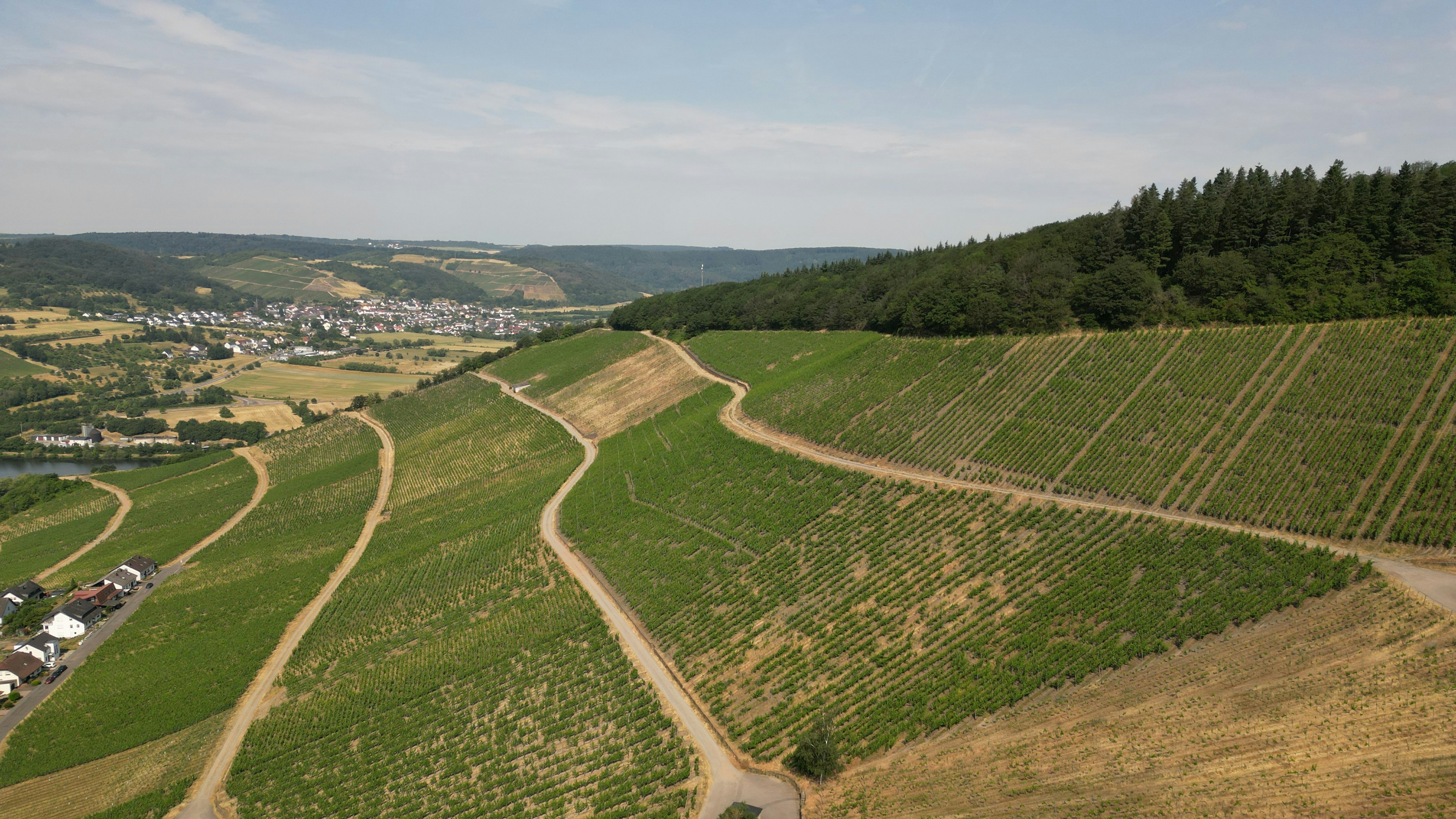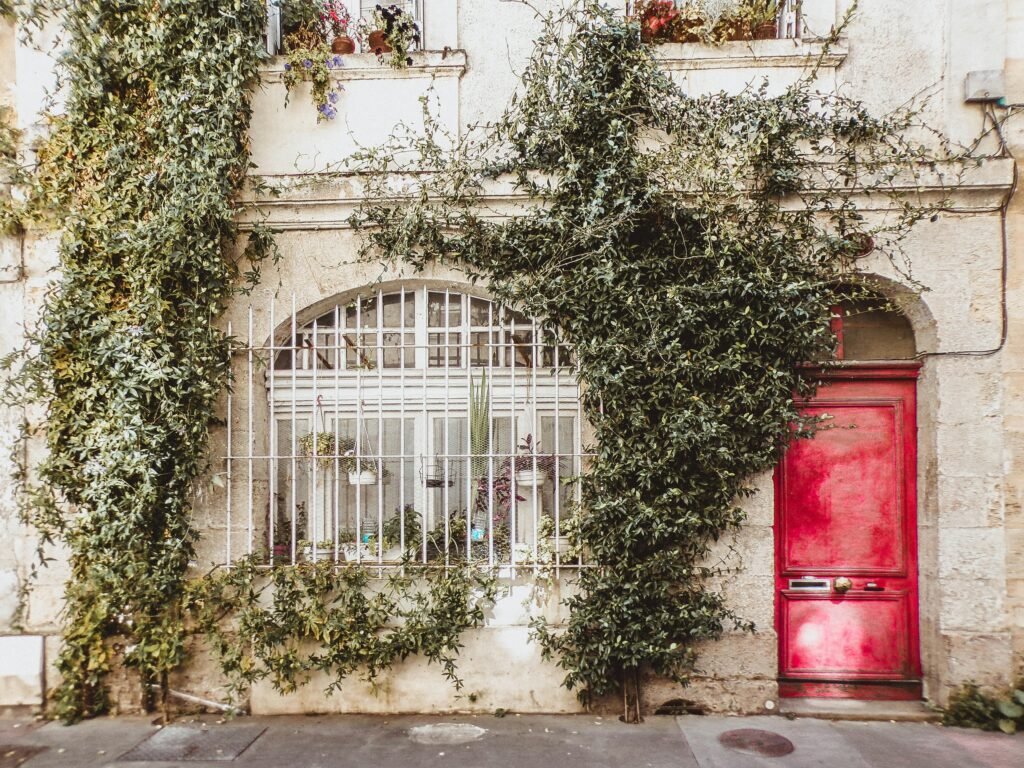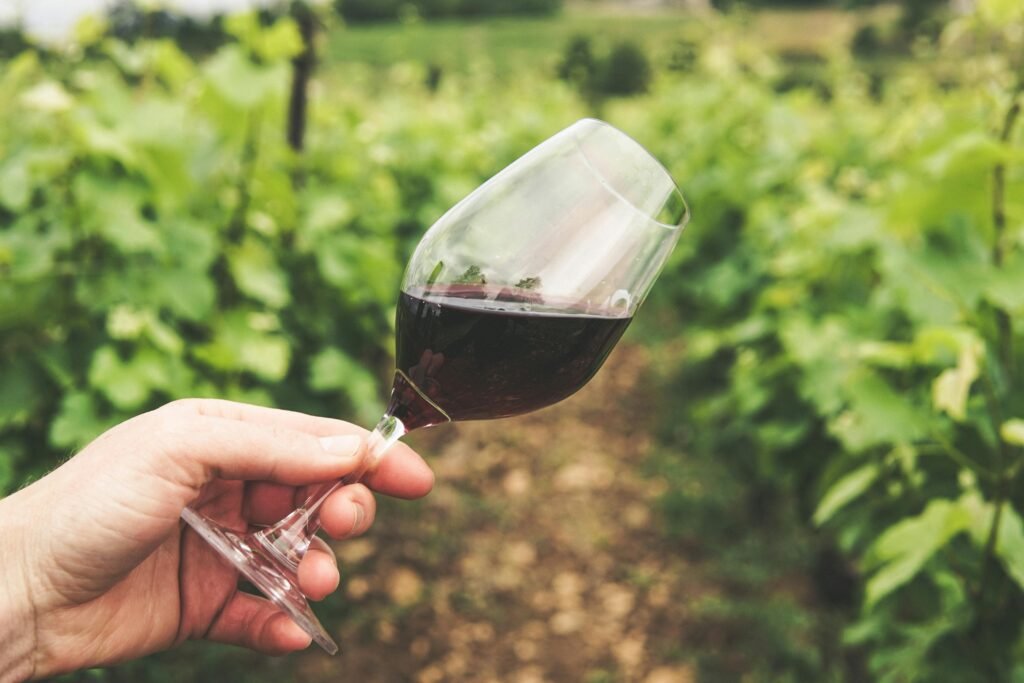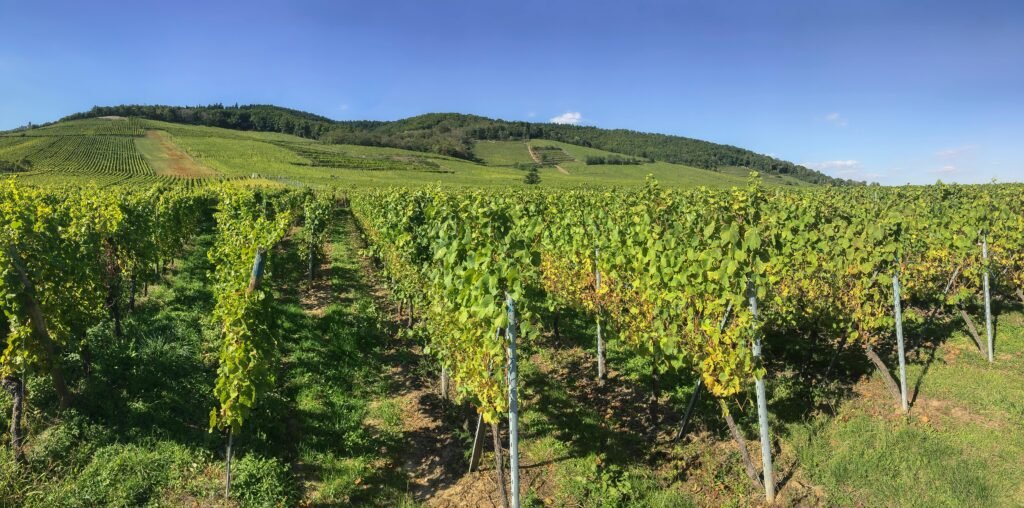Introduction to French Wine
The history of wine in France is both rich and extensive, intertwining with the cultural and culinary fabric of the nation. For centuries, France has been synonymous with high-quality wine production, thanks to its climate, varying landscapes, and diverse grape varieties. Each region in the country has its own unique terroir, which fundamentally influences the characteristics and quality of the wines produced there. This is a critical aspect for beginners who seek to delve into the world of French wine.

Wine is not just a beverage in France; it is an integral part of social gatherings, culinary experiences, and celebrations. It embodies the essence of French heritage, enriching meals and enhancing conversations. From the vineyards of Bordeaux to the slopes of the Alps, wine regions across the country boast a remarkable distinction in flavor profiles, showcasing a diverse array of wines ranging from robust reds to crisp whites and sparkling varieties. For novice wine enthusiasts, understanding the various French wine regions is essential for appreciating the complexity and craftsmanship behind each bottle.
Identifying the characteristics of wines from different regions allows beginners to make informed choices while exploring various styles and pairings. Familiarity with regions such as Burgundy, Champagne, and the Loire Valley can significantly enhance the experience, making it an amalgamation of sensory delight that complements the culinary delights inherent to French culture. Each region tells a story through its wines, and for those beginning their journey, it provides an avenue to learn and enjoy the intricacies of winemaking.
Ultimately, a solid foundation in the significance of French wine and its regions can lead to a deeper appreciation, enabling wine newcomers to navigate the vast landscape of offerings that France has to offer. Understanding these fundamental elements will enrich their palate and heighten their wine experiences significantly.
Bordeaux: The Classic Region
Bordeaux is arguably one of the most renowned wine regions in France, celebrated for its rich history and diverse range of wines. Spanning over 120,000 hectares, this region is responsible for producing some of the most prestigious wines globally. The primary grape varieties cultivated in Bordeaux include Cabernet Sauvignon, Merlot, and Cabernet Franc. Each grape contributes distinctive characteristics to the blends crafted in this area, resulting in a wide spectrum of flavors and styles that appeal to both novice and experienced wine enthusiasts.

The wines of Bordeaux can be categorized into several types, including red, white, and rosé. Red wines, often blends of the prominent grape varieties mentioned earlier, are known for their depth, complexity, and aging potential. Bordeaux whites, mainly made from Sauvignon Blanc, Sémillon, and Muscadelle, range from crisp and refreshing to rich and oaky. Additionally, Bordeaux produces sweet wines, particularly from the Sauternes region, where botrytized grapes create luscious, honeyed flavors. This versatility makes Bordeaux an excellent starting point for beginners exploring the wine landscape.
For those planning a visit to Bordeaux, there are numerous vineyards and tours that cater specifically to beginners. Notable estates such as Château Margaux and Château Lafite Rothschild offer guided tours and tastings, providing insights into the production process and the terroir of the region. Other activities, such as visiting the Cité du Vin, an interactive wine museum, can enrich the experience, offering educational resources for novices. Additionally, participating in vineyard walks or wine-pairing dinners can enhance one’s understanding and appreciation of Bordeaux wines. Engaging with the local wine culture will undoubtedly provide a memorable introduction to the world of wines.
Burgundy: The Land of Pinot Noir
Burgundy, located in the eastern part of France, is renowned globally for its exceptional wines, particularly its elegant Pinot Noir and crisp Chardonnay. With a rich history of viticulture that dates back to the Roman times, this region’s legacy thrives in its unique terroir, which combines soil, climate, and tradition. The vineyards benefit from a continental climate characterized by warm summers and cold winters, providing an ideal environment for cultivating high-quality grapes. The soil composition in Burgundy is predominantly clay and limestone, which greatly influences the characteristics of the wines produced here.

The uniqueness of Burgundy wines lies in their subtlety and complexity. Pinot Noir, known for its red fruit flavors intertwined with earthy undertones, thrives particularly well in this region. The wine exhibits a delicate balance between fruitiness and acidity, making it a versatile choice for various occasions. Similarly, the Burgundy Chardonnay offers a spectrum of tastes ranging from crisp apple notes to rich, buttery flavors, depending on the vineyard and winemaking practices applied.
For those new to the world of wine, Burgundy is an excellent starting point. Numerous beginner-friendly tours and tastings are available, allowing visitors to experience the beauty of its vineyards and the intricacies of wine production. Organizations such as Bourgogne Wine Tour offer guided experiences that include vineyard visits, meetings with winemakers, and educational tastings, which can enhance one’s understanding of the region’s viticulture. Furthermore, the picturesque landscapes and charming towns, such as Beaune and Meursault, offer an inviting atmosphere for both wine novices and enthusiasts alike.
Engaging in a wine tasting in Burgundy promises not only an exploration of its celebrated wines but also a journey into the cultural and historical context that underpins this renowned wine region.
Provence: Rosé Paradise
Provence, renowned for its stunning landscapes and Mediterranean charm, stands out as one of the most enticing wine regions in France, particularly for newcomers to the world of wine. This picturesque area offers a scenic backdrop of rolling hills, lavender fields, and azure coastlines, making it a delightful setting for wine enthusiasts to explore. The region is notably celebrated for its exceptional rosé wines, which are characterized by their light, fruity profiles, and crisp acidity.

The climate of Provence plays a pivotal role in the cultivation of its rosé wines. The warm Mediterranean sun, combined with the cooling sea breezes, creates the ideal conditions for growing grape varieties such as Grenache, Mourvèdre, and Cinsault. These grapes thrive in the dry, hot climate, allowing the production of vibrant and refreshing rosés that embody the essence of summer. For beginners, sampling these wines in their native terroir offers an unparalleled experience, as it provides an opportunity to appreciate the nuances of flavor that are a direct reflection of the region’s unique environment.
When venturing into Provence, visitors are encouraged to explore the numerous vineyards scattered throughout the region. Many wineries offer tastings and guided tours, which can provide valuable insights into the winemaking process. It is advisable to take advantage of these experiences, as they not only enhance one’s understanding of rosé but also allow for the appreciation of local culinary pairings. The pairing of Provençal rosé with regional dishes, such as ratatouille or seafood, creates a harmonious dining experience, showcasing the versatility of this wine.
Overall, Provence serves as an exemplary introduction for novice wine drinkers. Its emphasis on soft, refreshing rosé wines, coupled with the charming landscapes and rich cultural heritage, ensures that beginners will find themselves enchanted and eager to learn more about the world of wine.
The Loire Valley: The Garden of France
The Loire Valley, often referred to as the Garden of France, is renowned for its picturesque landscapes and diverse array of wines that make it an ideal destination for beginners. Stretching along the Loire River, this region is distinguished by its temperate climate, fertile soil, and beautiful châteaux, contributing to its reputation as one of the premier wine-producing areas in France.
The Loire Valley is home to a variety of grapes, each contributing to the distinctive profiles of its wines. Notable among these are Sauvignon Blanc, known for its crispness and aromatic qualities, and Chenin Blanc, which produces everything from dry to sweet wines. Additionally, the region showcases red varietals such as Cabernet Franc and Gamay, which are accessible and refreshing choices for those new to wine tasting. The broad spectrum of wine styles available here allows beginners to explore different flavors and find what resonates with their palate.
Celebrated for its cultural heritage and stunning beauty, the Loire Valley stands out as a wonderful introduction to the world of wine. Whether you are exploring the scenic vineyards or enjoying a glass of wine amidst the breathtaking views, this region promises a delightful experience for any aspiring wine enthusiast.
Champagne: A Taste of Celebration
Champagne, often referred to as the epitome of celebration, is a renowned wine region located in the northeastern part of France. This area is globally famous for producing sparkling wines that carry the same name. The terroir, or environment, of Champagne contributes significantly to its unique wines, characterized by distinct flavors and effervescence. The primary grape varieties cultivated here include Pinot Noir, Pinot Meunier, and Chardonnay, each contributing different elements to the final product.
The production methods in Champagne are distinct and sophisticated. The traditional method, known as ‘Méthode Champenoise,’ involves a secondary fermentation process that occurs in the bottle, creating the hallmark bubbles that Champagne is celebrated for. This meticulous craftsmanship requires time and expertise, making the wines from this region truly special. It is essential for beginners to understand that not all sparkling wines are Champagne; only those produced in this specific area, adhering to stringent production standards, can bear the name.
Visiting the Champagne houses offers an enriching experience for wine enthusiasts. Many of these establishments provide tours that explain the intricate process of Champagne production, from grape to glass. While touring, visitors are encouraged to ask questions, fostering a greater understanding of the vineyard’s history and methods. Tasting sessions often accompany these tours, allowing visitors to savor various styles of Champagne, from brut to rosé. To enhance your tasting experience, it is advisable to take mindful sips, appreciating the aromas and flavors that each glass offers.
For beginners, the Champagne region serves as an excellent introduction to the world of wine, blending educational experiences with enjoyment. Whether you are planning a trip to explore the vineyards or simply wish to understand the nuances of Champagne, this region promises an unforgettable journey into the realm of sparkling wines.
Alsace: A Blend of Cultures
Alsace is a distinctive wine region in France, renowned for its unique blend of French and German influences. This picturesque area, located along the border with Germany, features a diverse range of vineyards that thrive in its unique climate and geological conditions. Alsace is particularly famous for its white wines, with varietals such as Riesling, Gewürztraminer, and Pinot Gris taking center stage. These wines reflect the region’s rich cultural heritage and the meticulous techniques adopted by local winemakers.

The Riesling from Alsace is especially revered, characterized by its crisp acidity and floral notes, making it ideal for pairing with a variety of dishes. Gewürztraminer, on the other hand, is noted for its aromatic profile, offering hints of lychee and spice, which can appeal to many novice wine enthusiasts. Additionally, the Pinot Gris varietal showcases a complex flavor profile that can range from fruity to earthy, further enhancing the region’s appeal to beginners in the world of wine.
Exploring the charming villages of Alsace can be an enriching experience for those new to wine. Picturesque towns like Riquewihr, Colmar, and Kaysersberg offer a delightful blend of history, culture, and gastronomy alongside wine tasting opportunities. Many local producers provide guided tours and tastings, allowing beginners to immerse themselves in the winemaking process and better appreciate the craft behind each bottle. Engaging with these producers can provide valuable insights into the diverse styles of Alsace wines and how to best enjoy them.
As you venture through this culturally rich region, remember to take your time and savor each tasting experience. The warmth of the local hospitality, combined with the stunning scenery and quality of the wines, makes Alsace a perfect destination for newcomers eager to discover the joys of French wines.
Rhone Valley: Bold and Diverse
The Rhône Valley is a remarkable wine region in France, celebrated for its bold and diverse offerings. Spanning from the northern regions around Lyon down to the southern parts near Avignon, the Rhône Valley is distinguished by its varied terroirs that contribute to the uniqueness of its wines. The northern Rhône is particularly renowned for its robust Syrah wines, characterized by complex aromas of black fruits, spices, and earthy notes, making them exemplary representations of the varietal. In contrast, the southern Rhône boasts a wider repertoire of grape varieties, including Grenache, Mourvèdre, and Cinsault, which are often blended together to create rich and flavorful wines.
The variety of terroirs found in the Rhône Valley plays a crucial role in the characteristics of its wines. From the granite slopes of Côte-Rôtie and Hermitage to the stony soils of Châteauneuf-du-Pape, each location offers distinct growing conditions, greatly influencing the flavor profiles of the wines produced there. This diversity in terroirs ensures that wine enthusiasts, especially beginners, can discover a spectrum of palate experiences, ranging from bold and spicy to fruity and aromatic.
For those venturing into the Rhône Valley for the first time, several beginner-friendly vineyards and wine tours are highly recommended. Notable stops include the iconic vineyards of Viognier in Condrieu and the enchanting Châteauneuf-du-Pape region, renowned for its impressive wine varietals. Many wineries offer guided tours and tastings, providing an excellent opportunity to immerse oneself in the wine-making process while gaining insights into the region’s history and its intricate relationship with viticulture. Exploring the Rhône Valley not only enhances one’s understanding of wine but also fosters an appreciation for the artistry behind each bottle produced in this bold and diverse wine region.
Conclusion: Start Your French Wine Journey
Embarking on a wine journey in France presents an enriching experience for both novices and seasoned enthusiasts alike. Throughout this exploration of France’s finest wine regions, we have delved into the unique characteristics and offerings of various areas, including Bordeaux, Burgundy, Champagne, Rhône Valley, and Loire Valley. Each region presents its own distinctive terroirs, grape varieties, and artisanal wine-making techniques, ensuring that every visit will unveil new layers of appreciation and understanding.
For those keen on expanding their knowledge and palate, visiting these regions in person offers an unparalleled opportunity for immersive learning. Engage with local winemakers who are more than willing to share their expertise and passion for their craft. Participating in tastings and vineyard tours can significantly enhance one’s grasp of the complex nuances found in French wines. Additionally, many of these regions host wine festivals that celebrate the local harvest, drawing enthusiasts and experts to sample and enjoy the bounty together.
To further enrich your wine journey beyond the vineyard gates, consider exploring literature and online resources dedicated to French wines. Numerous books provide in-depth knowledge about wine regions, grape varieties, and tasting techniques, supporting your endeavor to appreciate wines more fully. Furthermore, joining a wine club can provide ongoing exposure to curated selections of French wines delivered right to your doorstep, along with tasting notes and educational content to help refine your palate.
In closing, we encourage you to seize the opportunity to visit these remarkable wine regions and immerse yourself in the incredible world of French wines. By taking proactive steps through exploration, education, and community engagement, your journey will undoubtedly yield a richer understanding and appreciation of this timeless beverage.




